Waterfowl of the World
In an exclusive excerpt from his forthcoming book, the author shares some of the highlights from his epic quest to photograph every species of duck, goose, and swan on earth
In an exclusive excerpt from his forthcoming book, the author shares some of the highlights from his epic quest to photograph every species of duck, goose, and swan on earth

Story and Photos by Gary Kramer
Long before dawn I gathered my photo gear and drove to a marsh near southern California's Salton Sea. It was my first day afield with my new 500 mm manual-focus telephoto lens and camera loaded with slide film. My destination was a freshwater wetland that was being used by American green-winged and cinnamon teal. I arrived before it was light, donned my waders and camo jacket, and made my way across the marsh to a patch of cattails. Even though it was only 15 minutes until sunrise, it seemed to take much longer, especially when I heard the whistling of wings and saw the shadowy forms of birds landing only yards away. Finally, the first rays of golden light brightened the marsh and I could begin to shoot.
That was nearly 40 years ago. As I look back on it, that morning was the beginning of my career as a serious wildlife photographer. At the time I was a wildlife biologist with the US Fish and Wildlife Service, and photography was only a hobby. After a 26-year federal career, I became a full-time outdoor writer and wildlife photographer. I have literally spent tens of thousands of hours waist deep in wetlands, photographing waterfowl, and I have written hundreds of articles and published thousands of images in Ducks Unlimited and other magazines. I also wrote six books illustrated with my photographs.
In 2017, I embarked on a project that would become the culmination of my life's work-photographing and providing descriptions of each of the 167 species of ducks, geese, and swans on earth. What followed was a three-and-a-half-year odyssey that took me to the far corners of the globe, including six continents and 40 countries. No matter what your level of interest in waterfowl, whether through hunting, birding, or just the general appreciation of nature and wildlife, I hope my book inspires you to support the efforts of Ducks Unlimited and others to conserve these remarkable birds and their habitats for generations to come.
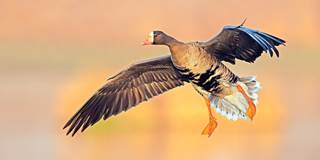
Known by most North American waterfowlers as "speckle-bellies," these geese are widely distributed across the Northern Hemisphere. All five subspecies are migratory, spending winter at lower latitudes, mostly in Europe, Asia, and North America.

The diminutive silver teal is found in Bolivia, Paraguay, Brazil, Uruguay, Chile, Argentina, and the Falkland Islands. Some populations are generally non-migratory, but birds in the southern portions of their range migrate as far north as southeastern Brazil during winter.
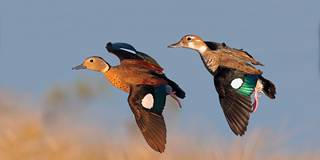
The only species in the genus Callonetta, these small South American ducks are cavity nesters, preferring wooded lowland wetlands with marshy clearings, flooded rice fields, and secluded ponds and streams.
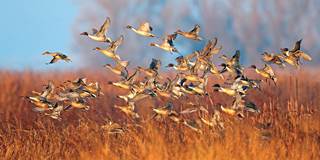
This graceful duck breeds across the Northern Hemisphere. In North America, most pintails nest in the Prairie Pothole Region and on the tundra of northern Canada and Alaska. In winter, large numbers of pintails congregate in the Central Valley of California, along the Gulf Coast, and in Mexico.
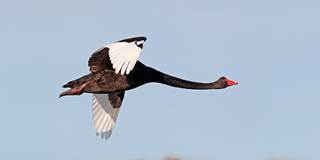
Native to Tasmania and the Australian mainland, black swans are the largest waterfowl in Australasia. They were introduced to New Zealand in the 1860s and subsequently into Europe, North America, and Japan.

This easily recognized duck is named for its specialized bill, which it uses to strain aquatic invertebrates and other foods from the water. Shovelers often swim in tight circles to bring food to the surface.
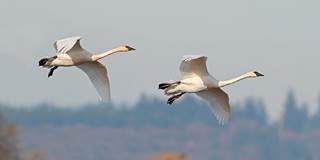
Market hunters and feather collectors had decimated trumpeter swan populations by the late 1800s. In 1935, only 69 trumpeters were known to exist. Thanks to conservation efforts, there are around 64,000 of these birds in North America today.
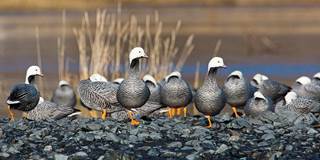
Ninety percent of emperor geese nest on Alaska's Yukon-Kuskokwim Delta. Although they are migratory, these striking blue-gray birds travel only a few hundred miles during their annual cycle.
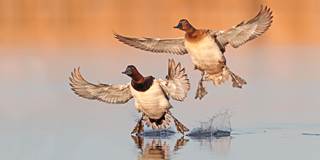
Known as the king of ducks, canvasbacks breed in greatest numbers in the Prairie Pothole Region and Boreal Forest. These regal birds winter on riverine deltas, estuaries, brackish and freshwater marshes, and lakes across the southern United States and Mexico.
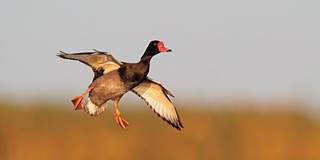
This eye-catching bird is classified as a diving duck. It feeds by dabbling and tipping up in shallow water and occasionally grazing on land but, curiously, rarely by diving.
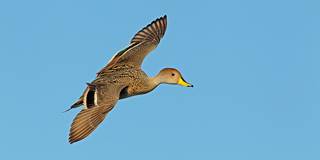
Endemic to South America and widely distributed from sea level up to 15,000 feet, the yellow-billed pintail is easily identified by its namesake bright yellow bill with a black stripe down the middle.
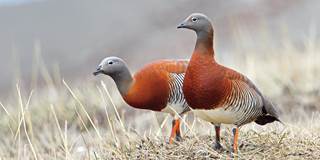
These beautiful geese build their nests in the cavities of trees or stumps. They are highly terrestrial, and about the only time the adults are seen swimming is when they have goslings.
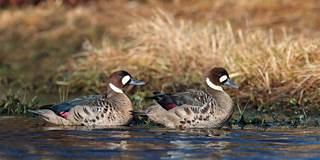
Among the least studied of any waterfowl species, bronze-winged ducks are found in the continent's southern reaches near fast-flowing rivers in forested regions and also on fresh-water wetlands and lakes.
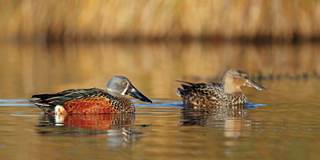
These dabbling ducks represent one of the four species of shovelers in the world. Sedentary in some areas and nomadic in others, they respond to wetland availability and dispersals following an annual molt.
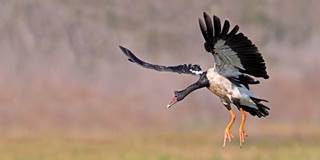
This large colony-nesting bird is not a true goose but a primitive species considered sufficiently distinct to be placed in its own family-Anseranatidae. Individuals have been known to survive up to 19 years in the wild.
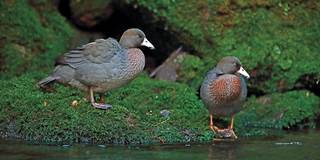
One of the world's five duck species adapted to living in mountain streams, blue ducks are endemic to New Zealand. Listed as endangered, their small, fragmented population is in rapid decline.
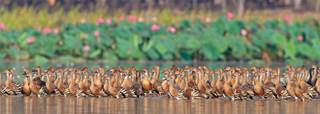
Named for their long, pointed, cream-colored flank feathers (plumes) edged in black, plumed whistling ducks are one of only two whistling duck species found in Australia.
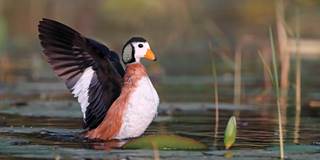
Weighing only 10 ounces, the African pygmy goose is not a goose at all but a member of the perching duck family. It is the smallest of Africa's ducks and among the smallest species of waterfowl in the world.
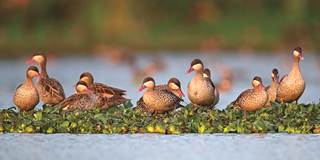
The familiar and widespread red-billed teal is found in shallow freshwater wetlands, lakes, and streams from southeastern Sudan to Ethiopia, southwest to Angola, south to South Africa, and throughout Madagascar.
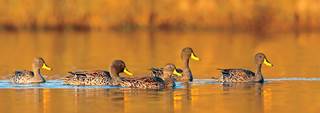
This common species is mostly sedentary but can be nomadic at times, dispersing as rains make new feeding and breeding opportunities available. Movements of up to 650 miles have been recorded.
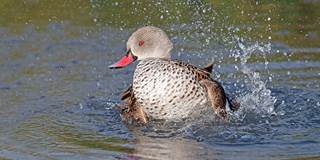
A small duck with a bright pink bill, the cape teal prefers shallow brackish and saltwater lagoons, including saltpans, hypersaline lakes, estuaries, and tidal mudflats. They also frequent rivers, streams, and freshwater wetlands, often near the coast.
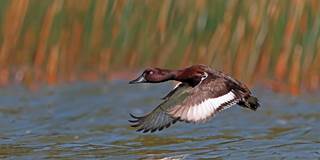
This medium- sized diving duck is the rarest waterfowl species on the planet and was once presumed extinct. In 2006, 13 birds were discovered on Lake Matsaborimena in northern Madagascar. An intensive captive breeding program is helping
restore wild populations.

Legend has it that these geese hatched from barnacles-hence their name. They breed on cliffs and rocky outcroppings to avoid predators, and newly hatched goslings often have to leap hundreds of feet to feeding grounds below.
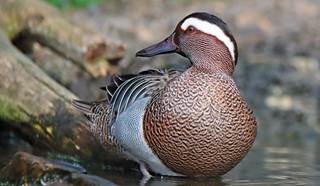
The highly migratory garganey breeds in the United Kingdom, Europe, Scandinavia, Russia, Kazakhstan, Mongolia, and northwest China. They winter in sub-Saharan Africa, the Indian subcontinent, Southeast Asia, Malaysia, Indonesia, Sumatra, and Papua New Guinea.
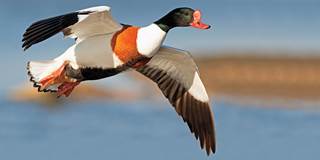
Resembling a small goose in size and shape, these widespread and common ducks form breeding pairs in January and February. Courtship behavior often results in males fighting, with vicious attacks to determine dominance.

The largest populations of Eurasian wigeon are found in northern Europe and southern Asia, but they are increasingly showing up on the Pacific Coast of North America, where they generally associate with American wigeon.
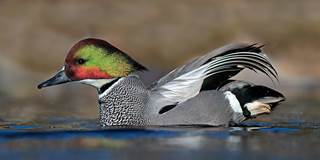
These palearctic dabbling ducks are fairly common, even locally abundant in certain areas, but are believed to be declining, particularly in China. Recent counts indicate a wintering population of only about 90,000 birds.
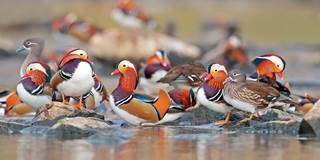
Drake Mandarin ducks are colorful, spectacularly plumed perching ducks that are widely regarded as among the most beautiful of all waterfowl species. Their populations have declined, mostly due to loss of forested habitats.
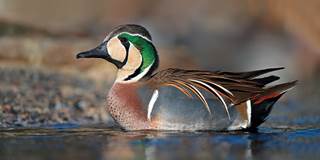
This small, brightly colored dabbling duck breeds in eastern Siberia and spends winter in freshwater and brackish wetlands, floodplains, flooded meadows, reservoirs, and rice fields in South Korea, Japan, and southeastern China.
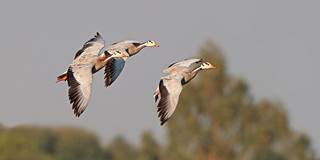
During migration, bar-headed geese navigate across the Himalayas, often at altitudes in excess of 25,000 feet. Numerous physiological adaptations, including hyperventilation, coronary vasodilation, and increased heart rate, boost the oxygen absorption required for the journey.
Through the remarkable images of award-winning photographer Gary Kramer and text by Kramer and Greg Mensik, Waterfowl of the World takes readers on a visual and literary journey in search of the world's 167 species of ducks, geese, and swans. Waterfowl of the World is a testament to Kramer's and Mensik's expertise in waterfowl ecology and management and, even more impressive, Gary's superb photography. This 540-page hardcover book contains 1,299 color photos accompanied by informative text and range maps. Author-signed books can be ordered at garykramer.net for $99 postpaid in the United States.

Ducks Unlimited uses cookies to enhance your browsing experience, optimize site functionality, analyze traffic, and deliver personalized advertising through third parties. By continuing to use this site, you agree to our use of cookies. View Privacy Policy